#FieldWork
Explore tagged Tumblr posts
Text


From the field: This month, Senior Museum Specialist Carl Mehling is in Wyoming, looking for dinos! The first image shows the team making plaster jackets, constructing the map grid, and digging. The second image is of a theropod tooth!
#science#amnh#museum#fossil#nature#natural history#dinosaur#animals#paleontology#fact of the day#did you know#expedition#fieldwork#fossil friday#theropod#cool animals#ancient animals#stem#paleontologist
658 notes
·
View notes
Text


Ankylosaurian sacrum from our anky site. Campanian, Judith River fm near Havre, MT.
#badlands dinosaur museum#fossil#fossils#palaeoblr#paleoblr#paleontology#palaeontology#dinosaurs#fieldwork#judith river formation#fieldwork 2024
240 notes
·
View notes
Text
Doing sleepy lizard fieldwork in the Mid Murray today involved bountiful encounters with goofy fellas as usual
This guy is somehow missing the keratin on most of his large tail scales, revealing the bony scutes (osteoderms) beneath. We’re not exactly sure how this occurred, hopefully he’s not scuffed up too bad, but it is quite cool to look at


Then there’s grumps over here, sucking on his pacifier. We named him Cupcake after his delightful personality


Cupcake is now getting clamped because he’s naughty and bit someone (actually just taking a measurement of head depth)
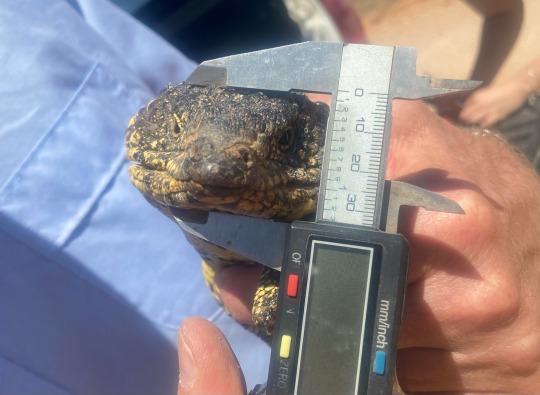
Polite gentleman patiently getting his tail measured (not a sleepy lizard, doesn’t want to be here)
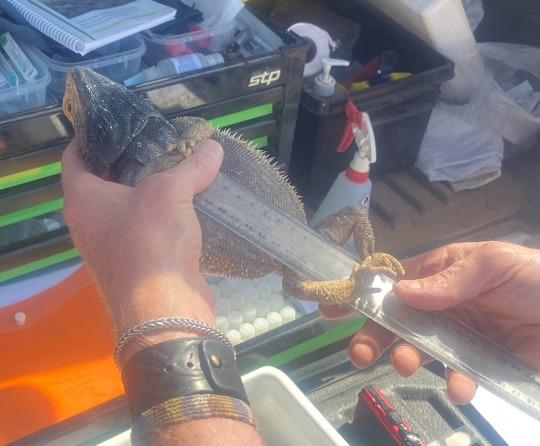
#south australia#australian wildlife#wildlife#reptile#reptiles#lizard#lizards#skinks#bearded dragon#shingleback#fieldwork#herpetology#my stuff
509 notes
·
View notes
Text
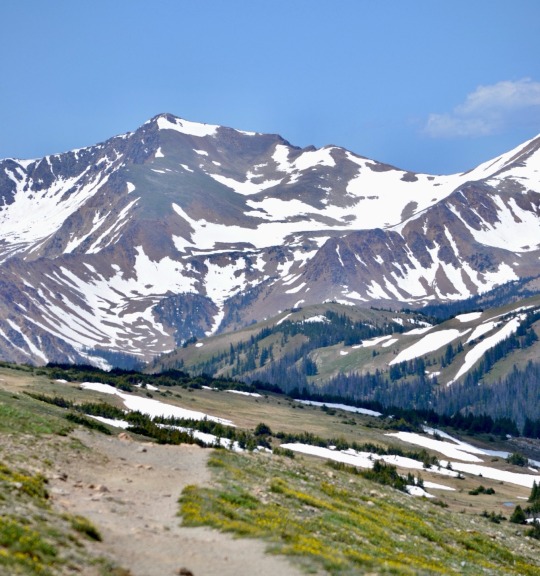


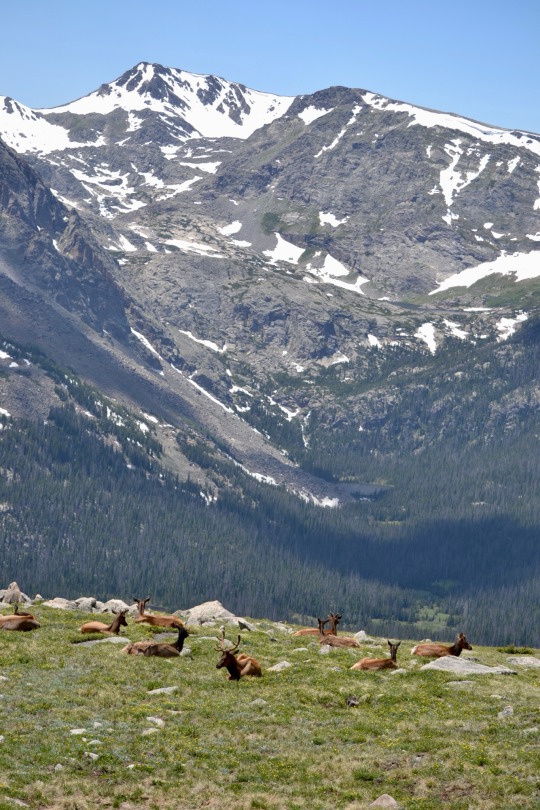



Field season is in full swing!
My mom is visiting for a week which means my fridge is full of delicious food and I’ve certainly been indulging.
Going to the gym whenever I can but tbh it’s been difficult with my mom here aaand field season. I’m sure I’ll get back to routine but I could prob use a break rn anyway.
It was my husband’s (that word still feels so weird!) birthday last week. We hosted our first little party at our house. Which meant I spent at least 3 days before rushing around like crazy getting a bunch of home projects done. I’m so excited with how the house is turning out tho, it’s slower progress than I expected but definitely progress! Also I looked super cute (and strong!) in the new outfit I got for the party.
I love my little life here in the mountains so much, sometimes I just need to take a second to stop and breathe and remember how amazing all of this is.
19 notes
·
View notes
Note
Hi. What do archaeologists do on a random dig day (if that's the right term)? I've seen a lot of portrayals in media, but I'm certain those representations are highly embellished.
I made posts about a fieldwork day and a lab day a few years ago during a dig. You can also check out the notes of this post where lots of different archaeologists talk about the hours that they work in the field. See also my field work tag.
In general, most days in the field are long, monotonous, and filled with very physical labor. "Exciting" big deal finds are relatively rare.
Time Team is my all time favorite archaeology portrayal in that it shows the good, the bad, and the ugly, but they also get to do way more work beforehand to handpick only the sites most likely to reveal "cool" stuff and their three-day timeline is far shorter than any real excavation.
If anyone is on a dig right now (or has been on one in the past) and wants to give a rundown of a day, feel free to add!
-Reid
93 notes
·
View notes
Text


another floristics survey plant
Chamaescilla corymbosa – blue stars or blue squill or mudrut
native to western australia
#nature#ecology#plants#conservation#botany#flora#native plants#australia#native flora#fieldwork#rains fieldwork
45 notes
·
View notes
Text
On this episode, Emily Long, Chelsi Slotten, and Kirsten Lopez are joined by Rachel Morgan, author of the fantastic book ‘Sins of the Shovel: Looting, Murder, and the Evolution of American Archaeology.’ We asked Rachel all about her motivations for writing about the history of how American archaeology came to be, along with highlighting a host of unique looters, archaeologists, and reporters along the way. This book is great for non-archaeologists and archaeologists alike!
39 notes
·
View notes
Text
graduating today for the final time after 8 years at the same uni. it's finished it's done you can't take loved awayyyyyy
#got my cool robe ✅ beautiful forest green hood ✅ palestine protest placard ✅#let’s gooooo#fieldwork
75 notes
·
View notes
Text
August 7th was a big day for me. Finally. After 5 years of participating in fieldworks, I found a skeleton of a theropod!
Well, this is actually not a full skeleton, but! For all the years of research on the Shestakovo location since 1953, only single bones of various theropods have been found here. And in general, all previously found here articulated skeletons belong only to psittacosaurs... So... this is really something new.

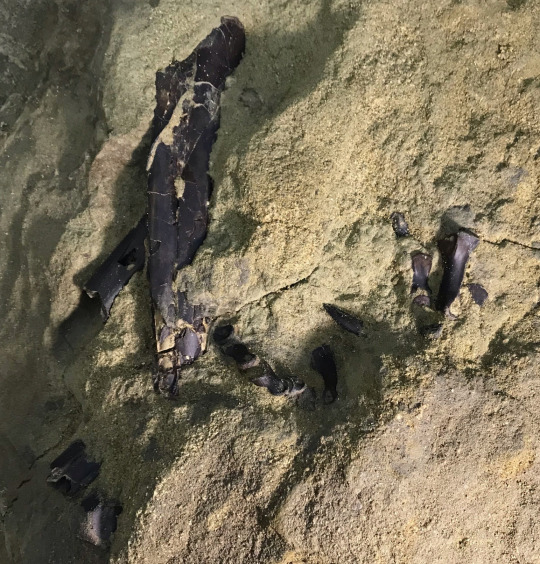
The wet sandstone was very brittle and crumbled at the touch of fingers exposing the fossil.
However, finding something is only half the case. You have to take it with you somehow and not break it. The fossil was encased in a single piece of sandstone weighing at least a third of a ton, lying on the bank of the Kiya River and half submerged in water. A high sheer cliff overhangs the shore, and the surface below is littered with cobblestones, on which no one truck can pass. The only way to take the fossil is to float it down to the gentle shore.

But there was a small problem... We had no boat or something. Fortunately, a local resident agreed to transport the block with the fossil on his own rubber boat. This was a small two-person rubber boat that can barely withstand the weight of the rock block. In addition, it turned out that the tightness of the air chamber of the boat is broken, so it needed to be continuously pumped up, otherwise the boat would have just sunk. x') But after a couple of hard hours, the fossil was finally loaded into the car... which couldn't move because it got stuck in the mud.
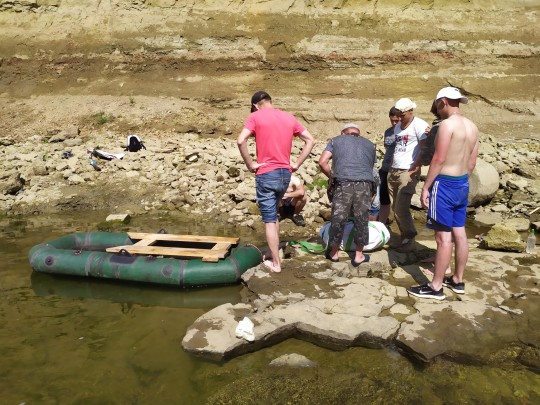
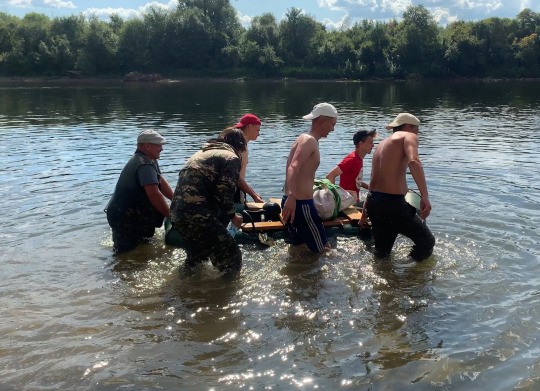
In parallel with all these events, I fought for the safety of the fragile bone, which was in a piece that broke off from the monolith. Its transportation took another day.
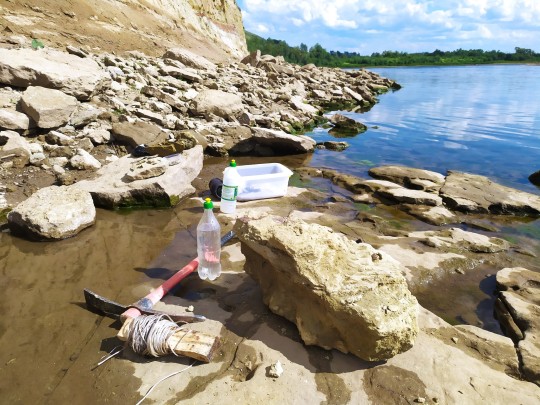

Location: Shestakovo-1 «Malyi Yar», Kiya River, Western Siberia. 08/08/2023
Now the fossil is in the camp. After drying and removing excess rock, it will be sent to the city for tomography. And maybe after that we will find out the taxonomic affiliation of the found prehistoric animal.
#cretaceous period#ilek formation#shestakovo#fieldwork#fossils#dinosaurs#dinosaur fossils#theropods#paleo#paleontology#geology#biology#science#sorry for my english
306 notes
·
View notes
Text



Waitzia nitida — photographed during a floristics survey
31 notes
·
View notes
Text

Fieldwork One Star Review Double IPA (Picked up at Windmill Farms). A 4 of 4. Hilarious name/description from the brewery, and a really great big Double IPA that delivers the hop complexity you'd expect with lots of tropical fruit, stone fruit, citrus, and some herbal notes, and a nice juicy body. Bitterness is there but not overpowering, and this has a nice lingering juicy finish.
8 notes
·
View notes
Text
Feeling proud of myself because today I managed to get a discharge measurement at a canal that no one in my office has caught flowing in 3.5 years.
We usually only go to our sites once or twice a month, at a regular schedule. This canal runs maybe 2 days a month, usually either at night or on a weekend, and oftentimes for not all that long. So despite someone paying it a visit once a month for years, no one responsible for it showed up while it was flowing.
9 notes
·
View notes
Text




Back at the Lambeosaurus (Liberty) quarry! I've been using a ZOIC T-Rex and modified Chicago Pneumatic CP-9361 to trench around bones so they're able to be jacketed and collected.
#Badlands Dinosaur Museum#judith river formation#Jack's bonebed#Liberty#havre#dinosaurs#Lambeosaurus#hadrosaur#palaeontology#paleoblr#palaeoblr#fieldwork#paleontology#fieldwork 2024
113 notes
·
View notes
Text
Hi geobuddies!!!
So the spring semester has started and we’re loving it! Besides that my geologist friend has a question!

She found this dope ass rock! It’s was found in Grand Teton National Park, Jenny Lake Loop! Anyone have any guesses?
P.S. I know you're not supposed to do rock ID from pictures but look how cool!!
137 notes
·
View notes
Text




Worked hard and played hard last week. Went on one of my longest work hikes (14.5 miles) and then went on one of my longest mountain bike rides the next day (14.5miles), before going back in the field the day after.
It felt good to push my body, to realize I have more in the tank, even when I’m tired and it would be easier to rest, I can keep going. But on the rare days off I’m resting hard. Kitten snuggles and catching up on tv shows. Eating good food. Sleeping. Getting ready for the next adventure.
15 notes
·
View notes
Note
I have about 3 years left until I have a masters degree, but I want to work in CRM/my country’s equivalent to we-wanna-build-a-road-here-you-better-save-the-graves for a few years maybe before i possibly go for a phd. As a neurodivergent person who struggles with routines and energy levels I think a lot about how i would manage such a massive full time job. Currently I work part time at a museum that hosts small archaeological digs for kids and adults, and i have been on excavation courses before, so I know how it partially feels like.
My question is; how do archaeologists who work in the field make time and energy for going to the gym, hanging out with friends and cooking etc outside of work? It can be so intense when you work with stuff you love. Any thoughts?
- @academiaautumn
I think the best advice I can give you is that you need to get in contact with someone working this job in your country who can give you a sense of how things work, because every country is going to be a little bit different. If you're in college/university, your professors probably have connections with colleagues or former students that they can put you in contact with.
I haven't done CRM, but I've been in similar situations and heard from friends who have, and I'll be real with you: a lot of the things you're asking about? You just do not do them. But keep in mind this is for US CRM and your mileage (or kilometerage) may vary.
These jobs are location specific, so you have to travel to wherever the excavation is. Usually for a set duration, with the longest being maybe a couple of months. This time frame and travel limits a lot of what you can do. The company employing you will put you up in a motel, but it probably won't have a kitchen. Because of the travel, most of the people you know are probably on the dig with you.
Time and energy... it depends. Check out the notes on this post for different archaeologists talking about what they do in a day. CRM is hard work, which can also translate to less energy for socialization/extracurricular activities than less physical jobs.
I'm a big believer that archaeology is for everyone, but unfortunately that does not mean that all areas of archaeology are accessible across the board. Before committing to this plan, you need to get a very clear understanding of what this work entails and how that interacts with your own needs. If you don't think those are compatible, 3 years out is plenty of time to start coming up with alternatives for after your master's (which I'm sure exist).
I did not go into CRM because of my own brain and body issues. I'm not saying that you can't or shouldn't, I'm saying that CRM is a difficult environment and you should do everything you can to set yourself up for success.
If anyone who does have actual CRM experience wants to add their perspective, that would be great.
-Reid
58 notes
·
View notes